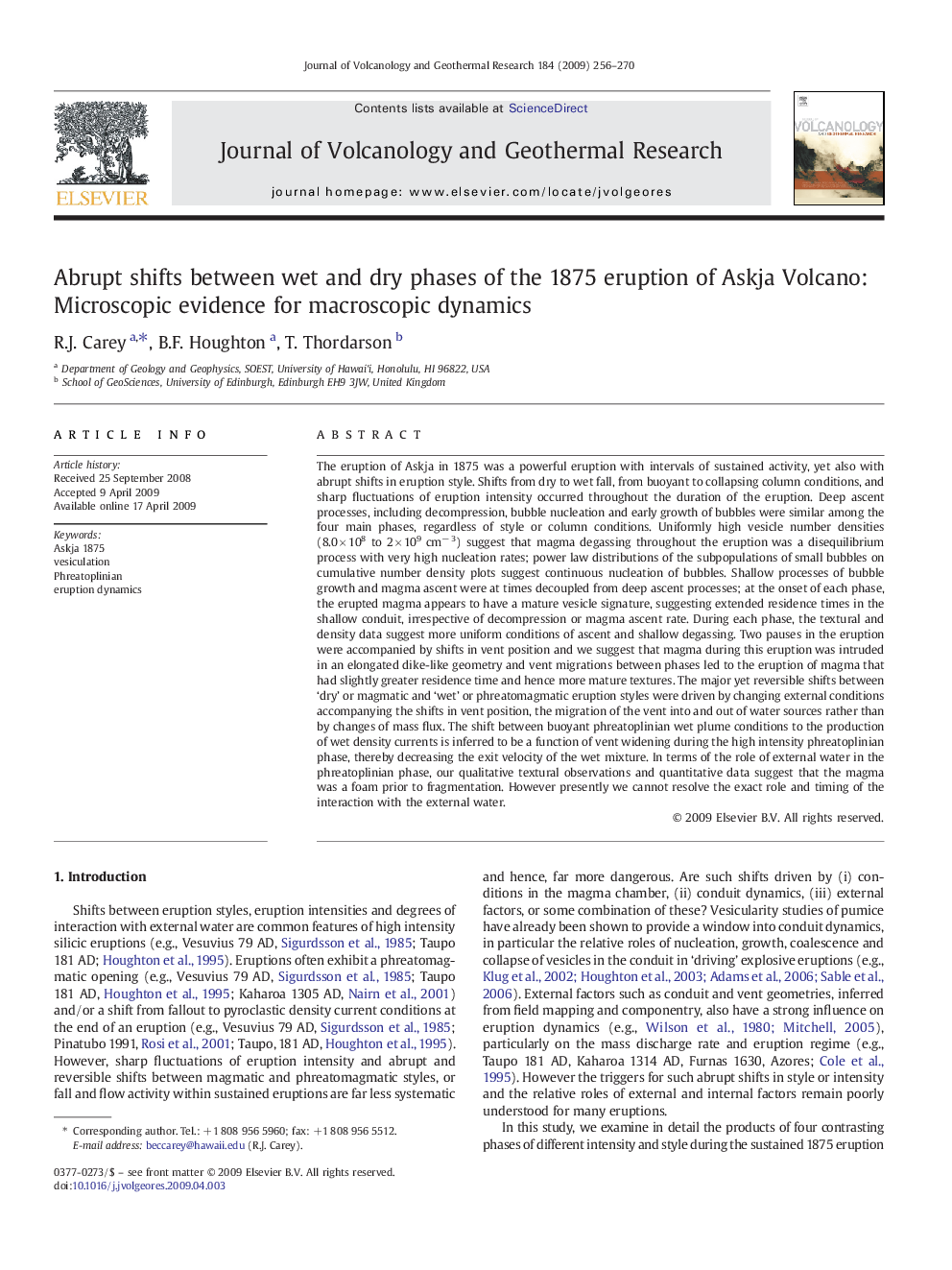| کد مقاله | کد نشریه | سال انتشار | مقاله انگلیسی | نسخه تمام متن |
|---|---|---|---|---|
| 4714246 | 1638434 | 2009 | 15 صفحه PDF | دانلود رایگان |

The eruption of Askja in 1875 was a powerful eruption with intervals of sustained activity, yet also with abrupt shifts in eruption style. Shifts from dry to wet fall, from buoyant to collapsing column conditions, and sharp fluctuations of eruption intensity occurred throughout the duration of the eruption. Deep ascent processes, including decompression, bubble nucleation and early growth of bubbles were similar among the four main phases, regardless of style or column conditions. Uniformly high vesicle number densities (8.0 × 108 to 2 × 109 cm− 3) suggest that magma degassing throughout the eruption was a disequilibrium process with very high nucleation rates; power law distributions of the subpopulations of small bubbles on cumulative number density plots suggest continuous nucleation of bubbles. Shallow processes of bubble growth and magma ascent were at times decoupled from deep ascent processes; at the onset of each phase, the erupted magma appears to have a mature vesicle signature, suggesting extended residence times in the shallow conduit, irrespective of decompression or magma ascent rate. During each phase, the textural and density data suggest more uniform conditions of ascent and shallow degassing. Two pauses in the eruption were accompanied by shifts in vent position and we suggest that magma during this eruption was intruded in an elongated dike-like geometry and vent migrations between phases led to the eruption of magma that had slightly greater residence time and hence more mature textures. The major yet reversible shifts between ‘dry’ or magmatic and ‘wet’ or phreatomagmatic eruption styles were driven by changing external conditions accompanying the shifts in vent position, the migration of the vent into and out of water sources rather than by changes of mass flux. The shift between buoyant phreatoplinian wet plume conditions to the production of wet density currents is inferred to be a function of vent widening during the high intensity phreatoplinian phase, thereby decreasing the exit velocity of the wet mixture. In terms of the role of external water in the phreatoplinian phase, our qualitative textural observations and quantitative data suggest that the magma was a foam prior to fragmentation. However presently we cannot resolve the exact role and timing of the interaction with the external water.
Journal: Journal of Volcanology and Geothermal Research - Volume 184, Issues 3–4, 20 July 2009, Pages 256–270